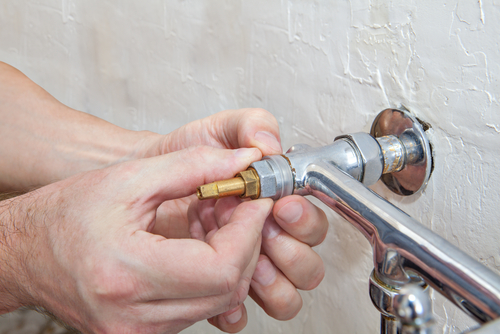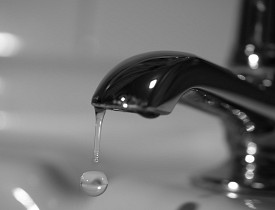They are making a number of great annotation related to Water Dripping from Faucet: Why and How to Fix as a whole in this post following next.

Leaking faucets may feel like a minor trouble, yet their influence exceeds simply the aggravation of the audio. From wasting water to incurring unneeded economic costs and health risks, disregarding a dripping faucet can lead to different effects. In this post, we'll explore why it's vital to address this typical household issue promptly and properly.
Wastefulness of Water
Ecological Impact
Dripping taps contribute significantly to water wastefulness. According to the Environmental Protection Agency (EPA), a solitary tap dripping at one drip per second can squander more than 3,000 gallons of water per year. This not just stress water resources yet likewise impacts communities and wildlife depending on them.
Step-by-Step Guide to Fixing a Dripping Tap
Tools Called for
Prior to attempting to take care of a dripping faucet, collect the essential tools, consisting of a flexible wrench, screwdrivers, replacement parts (such as washers or cartridges), and plumber's tape.
Common Faucet Issues and Their Solutions
Determine the sort of tap and the specific concern triggering the drip. Common issues include worn-out washing machines, corroded valve seats, or malfunctioning O-rings. Describe supplier instructions or online tutorials for step-by-step guidance on repair services.
Financial Prices
Raised Water Costs
Past the ecological effect, dripping faucets can pump up water bills substantially. The accumulated wastefulness gradually equates into higher utility expenses, which might have been prevented with timely repair work.
Prospective Residential Or Commercial Property Damages
Additionally, long term dripping can result in harm to components and surfaces surrounding the tap. Water build-up can cause discoloration, rust, and even architectural issues if left ignored, resulting in added repair work prices.
Health Problems
Mold and Mildew Development
The constant existence of dampness from a trickling tap creates a suitable environment for mold and mildew growth. These fungis not just endanger indoor air high quality yet additionally position health and wellness threats, particularly for individuals with respiratory system conditions or allergic reactions.
Waterborne Illness
Stationary water in trickling taps can come to be a breeding place for microorganisms and various other virus, raising the threat of waterborne conditions. Pollutants such as Legionella germs flourish in stagnant water, possibly causing significant ailments when ingested or inhaled.
Do it yourself vs. Expert Repair work
Advantages and disadvantages of DIY Fixing
While some may try to take care of a dripping faucet themselves, do it yourself repair work feature their own collection of challenges. Without correct knowledge and devices, DIY attempts can aggravate the concern or cause incomplete repair services, lengthening the problem.
Benefits of Employing a Specialist Plumber
Working with a professional plumber makes sure that the underlying source of the dripping faucet is dealt with successfully. Plumbers possess the competence and devices to identify and fix tap problems efficiently, saving time and minimizing the threat of further damage.
Environmental Obligation
Private Contribution to Conservation
Taking responsibility for repairing dripping faucets straightens with wider efforts toward water preservation and environmental sustainability. Every individual's actions jointly make a substantial effect on protecting precious sources.
Sustainable Living Practices
By prioritizing punctual repair services and adopting water-saving habits, people contribute to lasting living methods that benefit both existing and future generations.
Safety nets
Regular Upkeep Tips
To prevent leaking faucets, do routine upkeep such as cleaning aerators, checking for leaks, and replacing damaged parts immediately. Furthermore, take into consideration setting up water-saving devices or upgrading to extra efficient components.
Value of Prompt Services
Dealing with dripping faucets as soon as they're noticed stops additional water waste and prospective damages, inevitably saving both water and cash in the future.
Effect On Building Value
Understanding of Well-Maintained Home
Keeping a home in good condition, consisting of resolving upkeep concerns like dripping faucets, enhances its viewed value and charm amongst prospective purchasers or tenants.
Influence on Resale Value
Features with well-maintained plumbing fixtures, consisting of taps, command greater resale worths in the real estate market. Resolving dripping taps can add to a favorable impact throughout property inspections and negotiations.
Final thought
Attending to a dripping tap surpasses plain benefit; it's an important action toward saving water, lowering financial expenses, and safeguarding health and wellness and property. Whether with do it yourself repairs or specialist support, taking action to take care of dripping taps is a tiny yet impactful way to promote responsible stewardship of resources and contribute to a healthier, a lot more lasting future.
How to Fix a Dripping or Leaky Faucet
A leaking faucet is one of the most common problems that homeowners encounter, but it being commonplace doesn’t make it any less annoying. The constant drip drip drip of a leaking bathtub faucet, showerhead, or sink tap can disturb your home’s serenity. Left neglected, a dripping faucet can also result in higher water bills and discoloration or mold growth in your sink or plumbing fixtures.
Fortunately, you don’t have to be a trained plumber to know how to stop a dripping faucet. With some basic tools, replacement parts, and a little patience, leaky faucet repair is a breeze. In this article, we’ll explain what causes dripping faucets and how you can fix them.
What Causes a Leaking Faucet?
Kitchen and bathroom faucets come in all manner of designs, but most involve some combination of valves, O-rings, seals, and washers. The O-ring is usually the weakest link, but any one of these pieces can wear down over time. Heat, moisture, temperature fluctuations, minerals, mold, and movement can contribute to warping and corrosion, breaking the watertight seal. This just comes with the territory of being a homeowner. Everything is always subject to wear and tear, and some component parts of your appliances and fixtures need to be replaced on occasion. At least replacement O-rings are cheap!
More rarely, dripping faucets can be a symptom of excessively high water pressure. Were this the case in your home, you would probably notice that the leak is not isolated to one faucet. Water pressure issues are harder to resolve on your own. We recommend contacting a professional plumber if you suspect your water pressure is too high.
How to Fix a Dripping Faucet
Pipe wrench or monkey wrench Allen wrench set Screwdrivers Old towel or rag Shut off the water.
Before you do anything, you need to turn off the water to keep from drenching your kitchen or bathroom. You should find a valve under the sink and against the wall. Once you’ve turned this valve, try turning the faucet on to confirm that the water source has been cut off.
If you can’t locate your local valve for the faucet you’re working on, you can always shut off the water to the house at the main valve. Of course, this will prohibit anyone from using the sinks, showers, or toilets while you’re working on the faucet that’s giving you trouble.
Plug or block the drain.
You’ll be disassembling the faucet and removing some small bits of hardware. Plug the drain with a stopper or rag to avoid the possibility of a small screw falling into your P-trap.
Take apart the faucet assembly.
There are several varieties of kitchen and bathroom faucets, each with its own manner of assembly. For detailed instructions on how to disassemble your faucet, you can refer to the fixture’s manual or contact the manufacturer. If you know whether you have a ball, disc, cartridge, or compression faucet, you can find detailed schematics online.
In general, you need to begin by removing the faucet handles. You might notice a small screw that you’ll need to remove with a screwdriver or Allen wrench. If you don’t see any visible securing hardware, it’s likely hidden under a decorative cap that can be unscrewed or popped off with flathead screwdriver.
Remove each piece methodically, consulting a schematic when necessary. Take notes or arrange the pieces in such a way to make it easier to correctly reassemble the faucet later.
Remove the cartridge.
Once you’ve removed the handles and securing hardware, you should be able to remove the valve cartridge or stem. Some cartridges will slide right out. Other faucet models will require you to loosen a nut with a pipe wrench before you can remove the valve stem.
Examine the exposed hardware.
With the cartridge or stem removed, inspect the component parts. Check the rubber O-rings for wear and tear. Also examine the seat washer for corrosion or other damage. These pieces are usually the responsible parties for a dripping faucet, but it’s worth inspecting the other component parts while you have the faucet disassembled.
Find replacement parts.
Once you’ve identified which faucet component has failed, find an identical replacement. Your local hardware store should have O-rings, seat washers, and other standard components in stock. If you have a luxury or uncommon faucet, you may have to contact the manufacturer for a replacement part.
It’s a good idea to take your old parts with you to the hardware store so you can compare them with the store’s inventory and be sure you’re purchasing the correct replacement.
Reassemble the faucet.
With your new parts in hand, reconstruct the faucet and handles. Don’t be tempted to overtighten screws or nuts. You might think this could create a better seal, but it can instead damage or bend a delicate part of the assembly and create a new problem for you.
Turn on the water and test the faucet.
The only thing left to do is test your work. Unplug the sink, turn the water back on, and try the faucet. Congratulate yourself on a job well done!
https://www.libertyhomeguard.com/how-to-fix-a-dripping-or-leaky-faucet/

Hopefully you enjoyed our article about Should I Repair or Replace a Leaky Faucet?. Thanks a lot for taking the time to read our blog post. Be sure to set aside a second to share this article if you enjoyed reading it. Thank you for your time invested reading it.